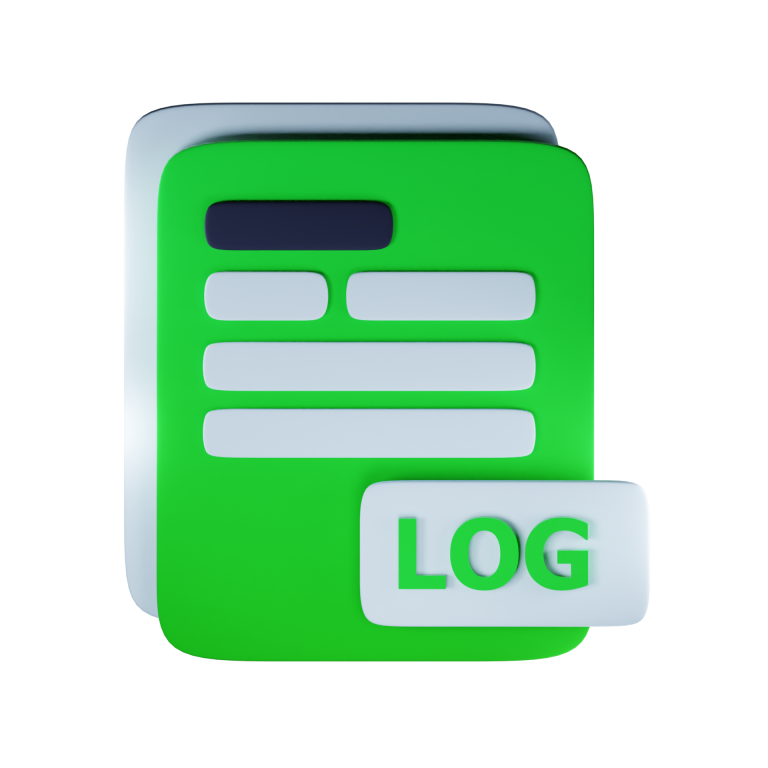.LOG File Extension

Log File
| Developer | N/A |
| Popularity | |
| Category | Text Files |
| Format | .LOG |
| Cross Platform | Update Soon |
What is an LOG file?
.LOG files, denoted by the “.LOG” extension, serve a crucial role in recording and documenting a series of events or changes within a system or application.
These text-based files store information in a chronological order, offering a valuable resource for troubleshooting, analysis, and historical tracking.
More Information.
The history of .LOG files is deeply intertwined with the growth of computing technology. Initially, these files were introduced to streamline debugging processes, enabling developers to trace the sequence of events leading to errors or malfunctions.
Over time, their utility expanded, finding applications in diverse fields, including data analysis, system monitoring, and software debugging.
Origin Of This File.
The origin of .LOG files traces back to the early days of computing when the need for systematic record-keeping became evident. Initially employed in system logs and error tracking, .LOG files evolved to become versatile tools for various applications, from software development to system administration.
File Structure Technical Specification.
.LOG files typically follow a straightforward text-based structure, recording events line by line with timestamps for chronological organization.
The technical specifications may vary based on the application generating these files, but they commonly adhere to plain text encoding, making them easily readable and portable across different platforms.
How to Convert the File?
How to Convert .LOG Files on Different Platforms
How to Convert the File in Windows:
Converting .LOG files in Windows is a straightforward process. Windows users can utilize various text editors or dedicated conversion tools. To convert to a different format, follow these steps:
- Open the .LOG file using Notepad or any preferred text editor.
- Copy the content to a new document if needed.
- Save the document with the desired file extension or format, such as .TXT, .CSV, or .XML.
Alternatively, third-party tools like log file viewers or converters can simplify the process, offering additional features and customization options.
How to Convert the File in Linux:
Linux users benefit from the versatility of command-line tools and graphical text editors. To convert a .LOG file on Linux:
- Open the terminal.
- Use text editors like Vim or Nano to open the file.
- Copy and paste the content into a new document if required.
- Save the document with the desired format, using standard Linux commands.
For users preferring a graphical interface, applications like Gedit or Kate provide similar functionality with a user-friendly interface.
How to Convert the File in Mac:
Mac users can leverage built-in text editors or third-party applications to convert .LOG files. Follow these steps:
- Open the .LOG file using TextEdit or a preferred text editor.
- Copy the content to a new document if necessary.
- Save the document with the desired format, such as .RTF, .PDF, or .HTML.
For advanced users, command-line tools like sed or awk can also be employed to manipulate the content and save it in a different format.
How to Convert the File in Android:
Converting .LOG files on Android involves using dedicated text editor apps available on the Play Store. Here’s a simple guide:
- Download and install a text editor app like Jota Text Editor or QuickEdit Text Editor.
- Open the app and navigate to the location of the .LOG file.
- Open the .LOG file within the app.
- Copy the content if needed and create a new document with the desired format.
These apps often support various file formats, allowing users to save the converted content in a format suitable for their needs.
How to Convert the File in iOS:
iOS users can employ text editor apps from the App Store to convert .LOG files. Follow these steps:
- Download and install a text editor app like Textastic Code Editor or Koder Code Editor.
- Open the app and locate the .LOG file.
- Open the .LOG file within the app.
- Copy the content to a new document and save it with the desired format.
Advantages And Disadvantages.
Advantages of .LOG files include their simplicity, human-readable format, and widespread compatibility. They serve as invaluable tools for diagnosing issues, tracking changes, and understanding the system’s behavior.
However, their plain text nature may limit the inclusion of complex data structures, and they can grow large, posing storage challenges.
How to Open LOG?
Open In Windows
Opening .LOG files in Windows is a seamless process. Utilizing built-in text editors like Notepad or more advanced tools like Notepad++, users can easily access and analyze the content. The simplicity of the format ensures compatibility across various Windows applications.
Open In Linux
Linux users benefit from the platform’s native support for plain text files. Popular text editors like Vim, Nano, or graphical tools like Gedit allow users to open and inspect .LOG files effortlessly. The versatility of Linux ensures compatibility with a wide range of applications.
Open In MAC
Similar to Linux, macOS provides native support for .LOG files. Users can leverage text editors like TextEdit or more advanced options like BBEdit to view and edit the content. The cross-platform nature of plain text ensures a seamless experience on Mac systems.
Open In Android
On Android devices, various text editor apps, available through the Play Store, enable users to open and review .LOG files. These apps provide a mobile-friendly interface for accessing and editing plain text content on the go.
Open In IOS
iOS users can employ text editor apps available on the App Store to open and interact with .LOG files. These applications offer user-friendly interfaces, making it convenient to view and edit plain text content directly on iOS devices.
Open in Others
Beyond the mentioned platforms, .LOG files find compatibility across a spectrum of operating systems. Whether it’s through dedicated text editors, integrated development environments (IDEs), or specialized log viewers, users can access and manipulate .LOG files on various computing environments.













